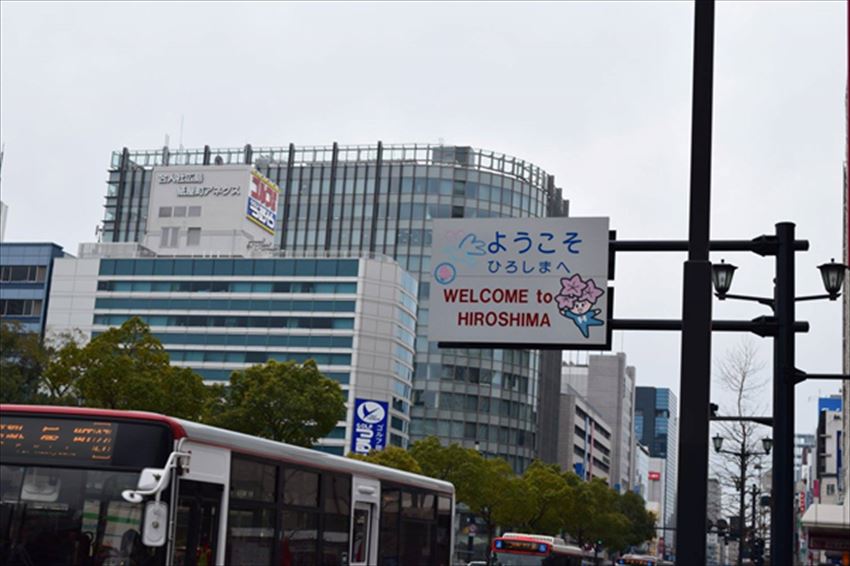
We at Fun Japan also wish to make this an affordable trip, so this guide will provide both information for those willing to spend a little more money (splurge) and for those who want to limit their expenses.
●Splurge
Shinkansen:The shinkansen from Hakata to Hiroshima station provides one of the quickest routes, however it is the most expensive. The suggested shinkansen route is offered by the JR Sakura 546 service which takes 64 minutes in total, and costs around 18,000 yen for a round trip. But be sure to book in advance as ticket prices fluctuate.
●Affordable
Night bus:The Kosoku bus which runs a service from Hakata bus terminal offers an affordable night bus which takes around 4 hours from Hakata to Hiroshima.
Normal Train: Train services from Fukuoka can in many cases be more expensive than the night bus. However there is a way to make this the cheapest option through the purchasing of the Seishun 18 kippu. This ticket can be bought for 11,850 yen at any JR ticket office in Japan. Don’t let the 18 fool you this ticket can be purchased by anyone. The Seishun Juhachi Kippu literally ‘Youthful 18 Ticket’ is a seasonally available railway ticket, which gives you five days of unlimited, throughout Japan on local and rapid JR (Japan Railways) trains for only 11,850 yen. So you can either use this ticket to continue to travel to other locations or you can share it with a friend and halve the expense for a return ticket to Hiroshima. However this can be a long trip taking around 6 hours and requires changing at many stations. I found this to be an enjoyable route as I got to see many different areas of Japan. The route is as follows:
Hakata station JR Kagoshima line rapid for Mojiko to Moji à Moji station JR Sanyo line for Shimonoseki to Shimonoseki à Shimonoseki station JR Sanyo Line for Iwakuni to Iwakuni à Iwakuni station JR Sanyo link for Hiro to Hiroshima station. Please find below the dates of validity and purchase dates for the Seishun Juhachi Kippu.
Validity Sales date
- MAR 1st to APR 10th FEB 20th to MAR 31st
- JUL 20th to SEP 10th JUL 1st to AUG 31st
- DEC 10th to JAN 10th DEC 1st to DEC 31st
Getting around Hiroshima when compared to other parts of Japan is much cheaper and offers a number of options. The most popular mode of transport in Hiroshima is the JR tramlines. Single tickets are affordable and cheap however if you are looking to access other parts such as Miyajima, we suggest buying the weekly and 1 day streetcar and ferry passes abroad any of the trams, just ask the conductor. Hiroshima is quite accessible on foot so the best option might be to purchase a single day pass for 840 yen and try to fit both local spots and Miyajima into a day. This ticket grants the user unlimited access to both trams and the Miyajima Matsudai ferry. In addition this ticket also provides you with a discount voucher (700 yen off) for the Miyajima ropeway which takes you to the very top of Mt. Misen. Another perk is that you will also receive a discount voucher to use in the Momiji Honjin store and 3 free Momiji manju cakes.
Accommodation
A personal recommendation for those wishing to make this an affordable trip and convenient trip would be the Evergreen Hostel. This hostel is located in the very center of Naka, Hiroshima. The staff are kind and friendly, they also speak fantastic English. I found that they were very enthusiastic when it came to offering recommendations for local sites to see, as well as the best places to eat okonomiyaki (the local delicacy of Hiroshima). The rooms are separated into 2 types of dorms. These are a mixed dorm and female only dorm. The beds are extremely comfortable and are similar to capsule style hotel, only more spacious with an extra power port for chargers or laptops, as well as free wifi. Also for those wishing to save money or like myself allergic to anything from the ocean, you can use their well-equipped kitchen to cook your meals. The greatest aspect with regards to the hostel is its location. Situated in Naka, the hostel is a 10 minute walk from the Hiroshima shopping district which offers a number of shops, restaurants and video game centres, as well as a cheap local onsen. Evergreen is also only a 15 minute walk to the Hiroshima Peace Park, museum and the Genbaku Dome. A 20 minute walk will also get you to Hiroshima Castle. Access to the hostel is easy with it only requiring a 13 minute tram to Hiroshimaki station (Hiroshima dentetsu tram no.2 160 yen and then a 2 minute walk from the station. If booked in advance rooms can cost as little as 2300 yen a night.
Evergreen Hostel- Access: From Hiroshima Station, takes No.2 or No. 6 Tram and get off at Honokawa-cho Station
- Address: 2-4-17,Honkawa-cho, Naka-ku, Hiroshima
Map:
Tourist Attractions
Hiroshima Peace Museum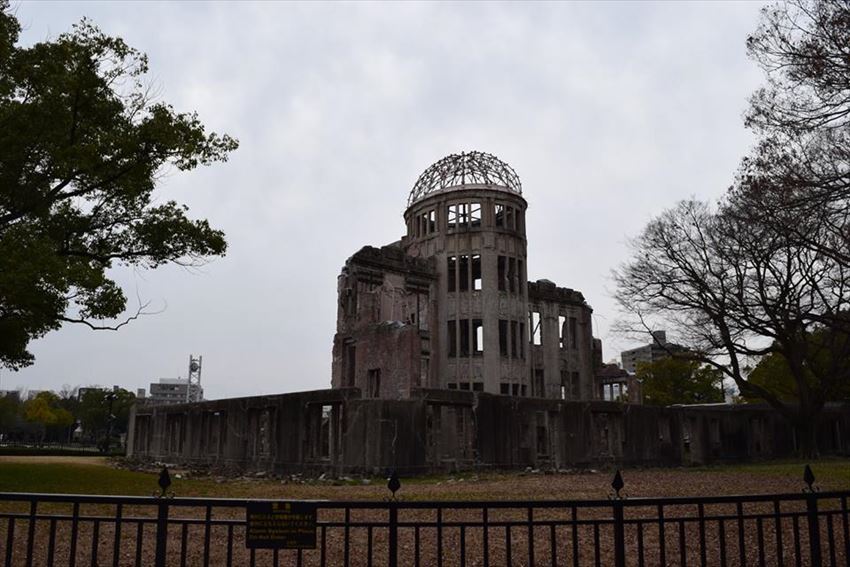
The Hiroshima peace museum was established in 1955 as a means to promote both peace and the eradication of nuclear weapons. The museum houses a number of personal items collected from victims, as well as those who survived the atom bombing of the city. The museum conveys the horror of the bombings by displaying a number pictures of the victims of the bombing. The museum is separated into a number of wings, the east wing is dedicated to Hiroshima prior to the atomic bombings and the west wing provides information on what the overall affect the atomic bombing had on Hiroshima. The museum is open every day 8.30am to 6pm, and the entry fee is 200 yen per person. Listening aids are also provided in a number of languages with exhibit information provided in both Japanese and English. The museum is located in Hiroshima Peace Park which also has a number of statues dedicated to the victims, as well as being close to the genbaku dome which was the striking point of the bomb. Hiroshima peace museum can be accessed via the trams, it takes around 15 minutes from Hiroshima station (dentetsu tram no.2 160 yen).
Information
Address: 1-10 Otemachi, Naka Ward, Hiroshima,
Map:
Hiroshima Castle
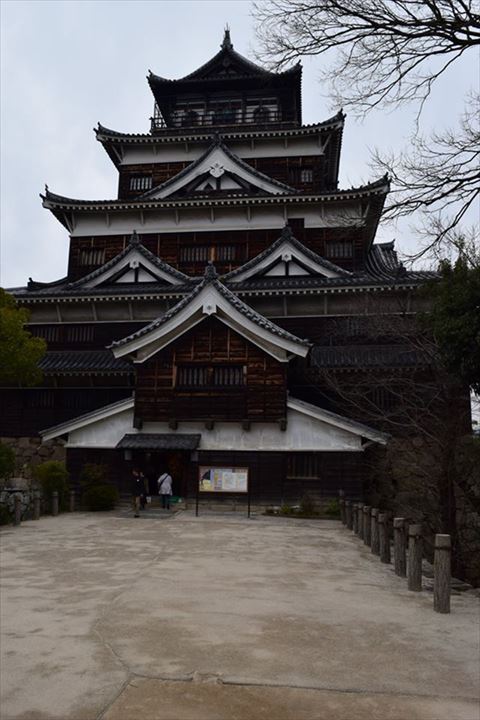
Hiroshima Castle was completed in 1599 by Mori Terumoto one of Toyotomi Hideyoshi’s council of five elders. The castle as a military stronghold was destroyed by the atomic bomb, with the current castle being a reconstruction made through the use of witness statements and architect’s notes. Hiroshima castle was given the title of national treasure in 1931.
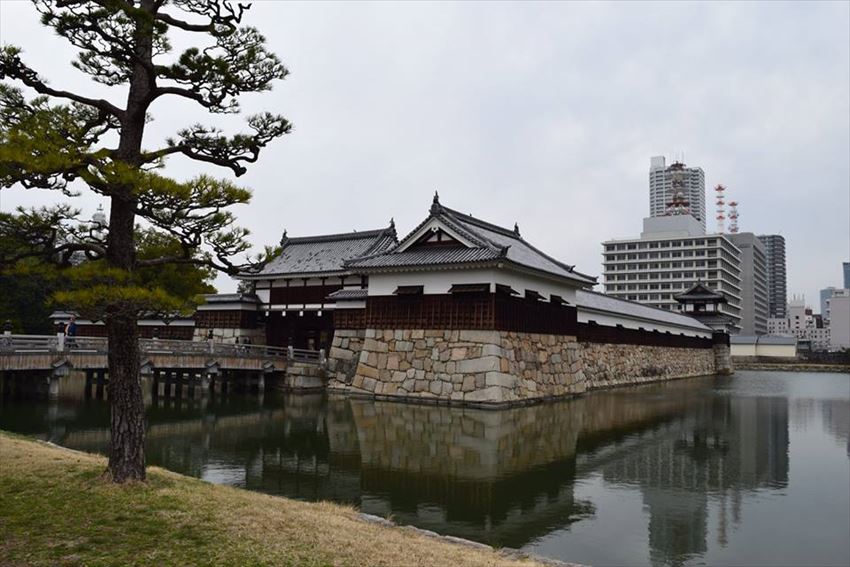
The castle houses a number of samurai weaponry, with the option of taking a free photograph while wearing the armour of a sengoku general. As well these exhibits, the castle contains a number of local art pieces and interactive exhibits. Opening hours vary depending on the time of the year: 9am-6pm (March-November) 9am.-5pm (December-February Weekdays). Entry fee is 360 yen, however if you are a foreign exchange student at a Japanese university you can enter the castle for free, with discounts applied to those from other non-Japanese universities. Be sure to provide your student ID as proof. Hiroshima castle can be accessed via the trams, it takes around 10 minutes from Hiroshima station (Kamiyacho-higashi tram station 160 yen).
Map:
Itsukushima shrine (Miyajima)

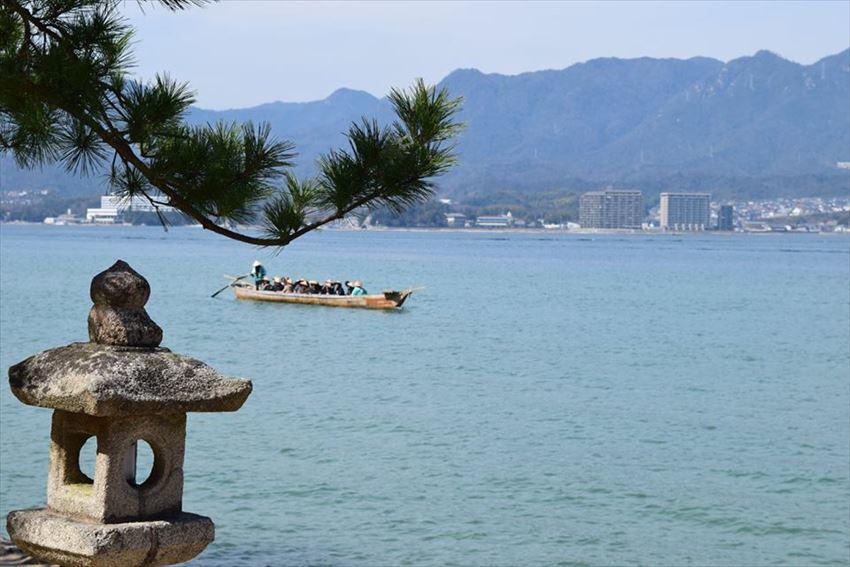
No trip to Hiroshima is complete without a stop off a Miyajima. In reality Miyajima is actually known as Itsukushima literally meaning shrine Island. It is commonly believed that Miyajima is the home of the Gods of Japan and thus is considered sacred. Itsukushima Shrine was first established by Empress Suiko, however it is argued that it was constructed by Taira no Kiyomori. The area is also home to a number of deer who roam around the area. While it is safe to pet the deer as they have had their antlers removed and are known to be more passive than their Nara counterparts, still be sure not to feed them anything as this can lead to starvation.
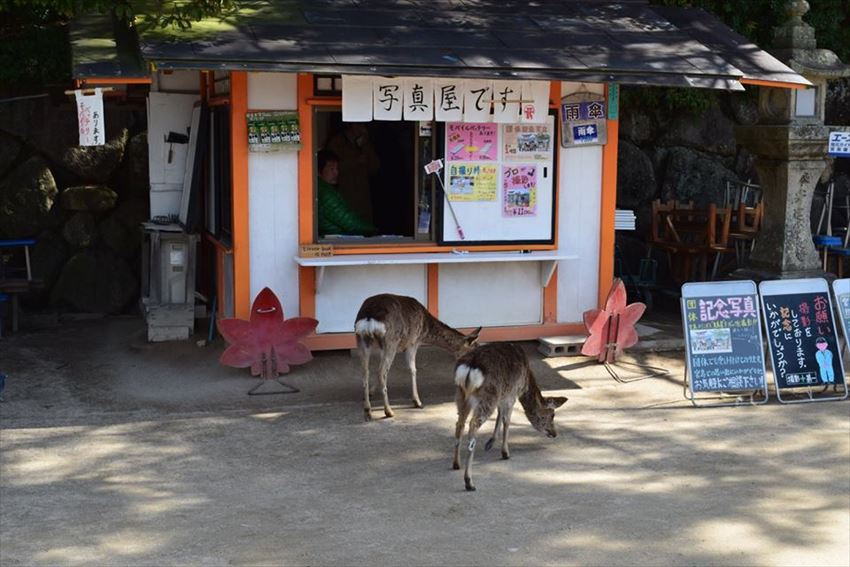
Miyajima is also home to a number of shrines, including the world famous Itsukushima shrine. Adored in red, it is a truly beautiful sight to behold. The shrine and Mon (gate) are built on water, as such from a distance it looks as though the structure is floating on water, almost as if it were dragged from ukiyo-e floating world itself.
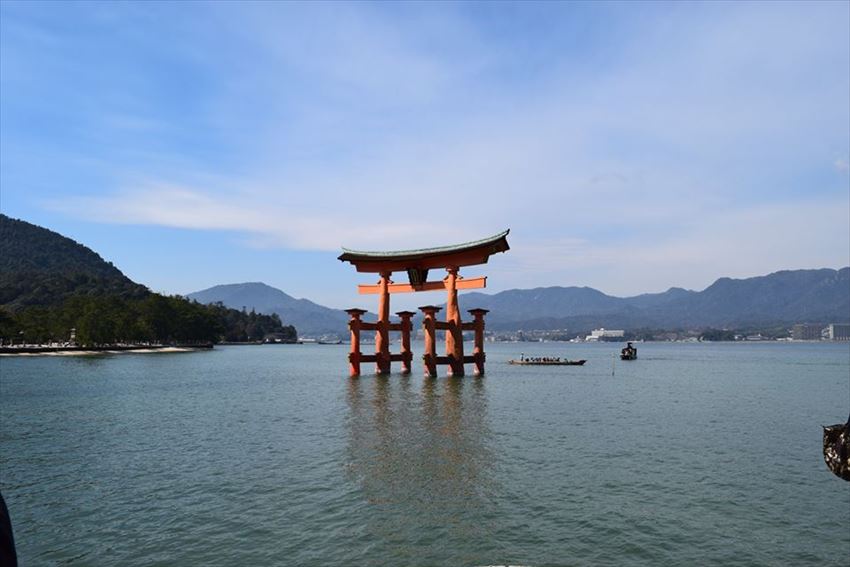
The shrine contains a treasure room, Noh theatre and in many cases it is not out of the ordinary to witness a traditional Shinto wedding taking place. The best time to visit this shrine has to be at sunset as the entire area is illuminated by thousands of lights. As such, as well as enjoying the shrine during the day, it is well worth staying for the evening to witness such a beautiful sight. You can either watch the lights go on from land or sea by paying to board one of the many gondola style boat services provided. Entry to Itsukushima Shrine is 500 yen per person which includes access to the treasure room. From Miyajima boat port to Miyajima island it costs 170 yen by the JR boat service, however it is advisable that you buy the 1 day streetcar & ferry pass which gives you access to a faster, less crowded ferry service offered by Matsudai.
Map
Flower Festival
This festival first took place in honour of the Hiroshima Carps baseball team’s first victory in the Japanese nation baseball championship in 1975. Beyond the name this event is host to a number of shows including J-pop concerts and comedians. There are also food vendors from various parts of Japan so be prepared to try as many of the treats on offer. The festival is the first weekend of May, of course the shows are free, but be sure to save up those pennies for the food on offer.
Peace memorial ceremony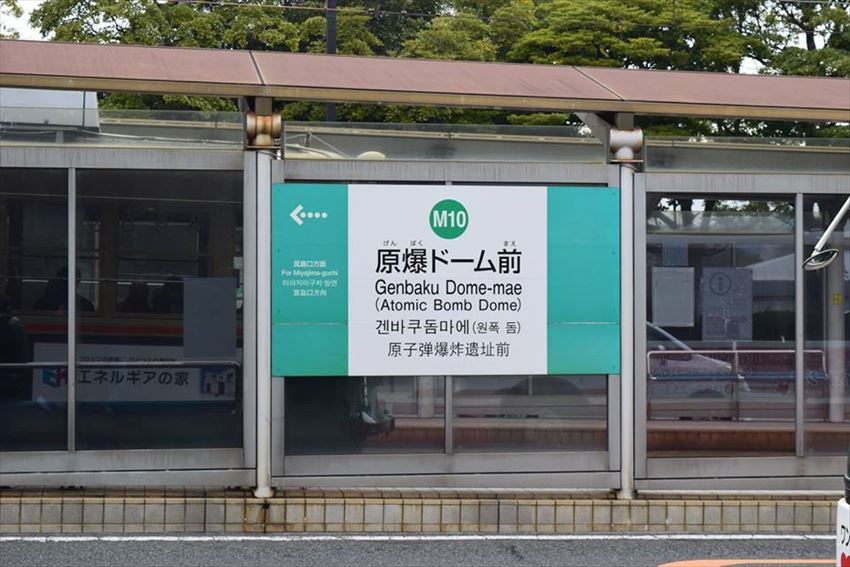
This event is held every year on the anniversary of when the atomic bombings in Hiroshima occurred. The event plays host to many locals, as well as Hibakusha (people affected by the atomic bombings). The ceremony is opened by the mayor of Hiroshima, where upon an air raid siren sounds and is immediately followed by a minutes silence. This ceremony takes place in the morning at the peace memorial park at 8.15 am, then at 8pm by the river park thousands of different coloured lanterns are released into the water. It is believe that these lanterns carry the souls of those who have died to the afterlife. This event is held on the 6th of August 6 and is of course free, so pay your respects if you get the chance.
Food festivalThe name gives it away. This food festival is a chance to try the foods of many different areas of Japan, as well as foods from different countries. This includes meats, seafood, vegetarian options and of course desserts, desserts and desserts!!! The event takes places at Hiroshima Castle and Chuo Park during the last weekend of October. Regardless of the time of the year, be sure to try Hiroshima’s famous okonomiyaki. This dish a kind of savoury pancake containing meat, seafood, noodles and cheese and is extremely tasty. For those with allergies Nagata-ya is the ideal place to eat. As well as offering the stable ingredients that have made this dish famous, there is also options for those with allergies, vegetarians, vegans and those of a faith that abstains from the consumption of pork.
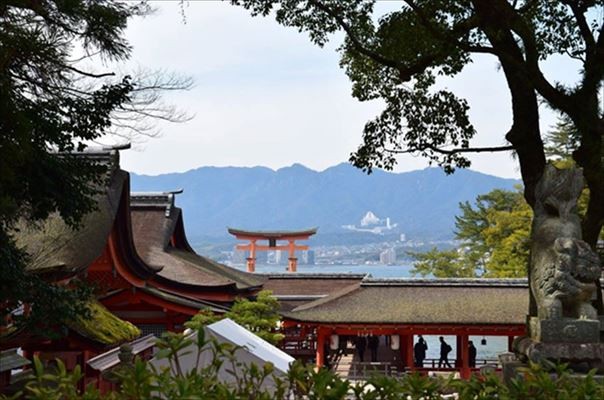
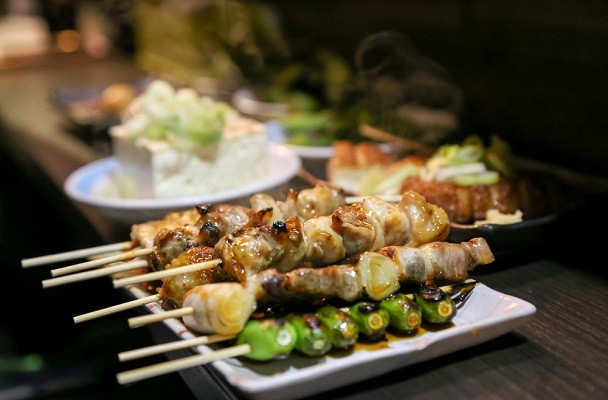

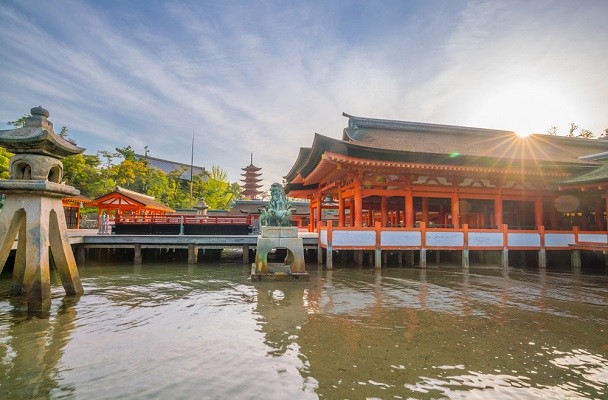
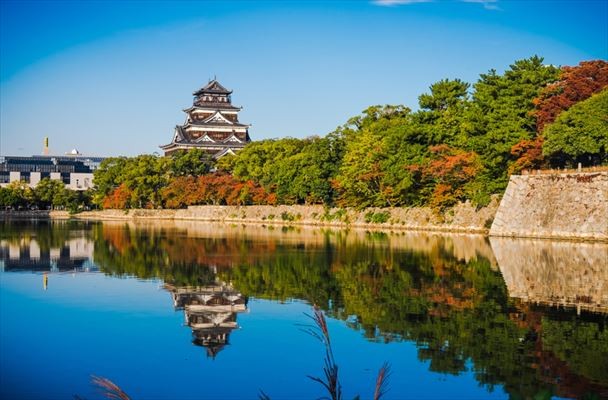

Comments